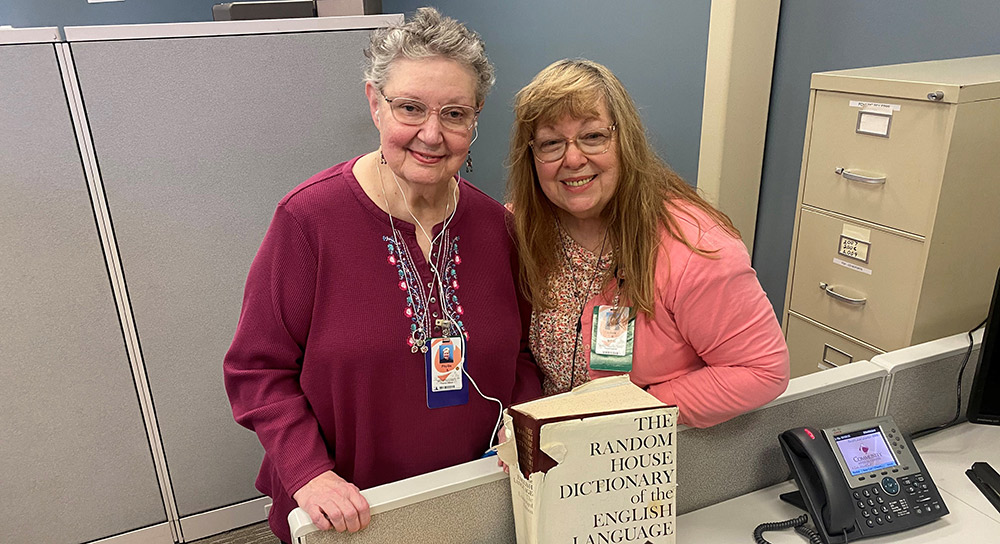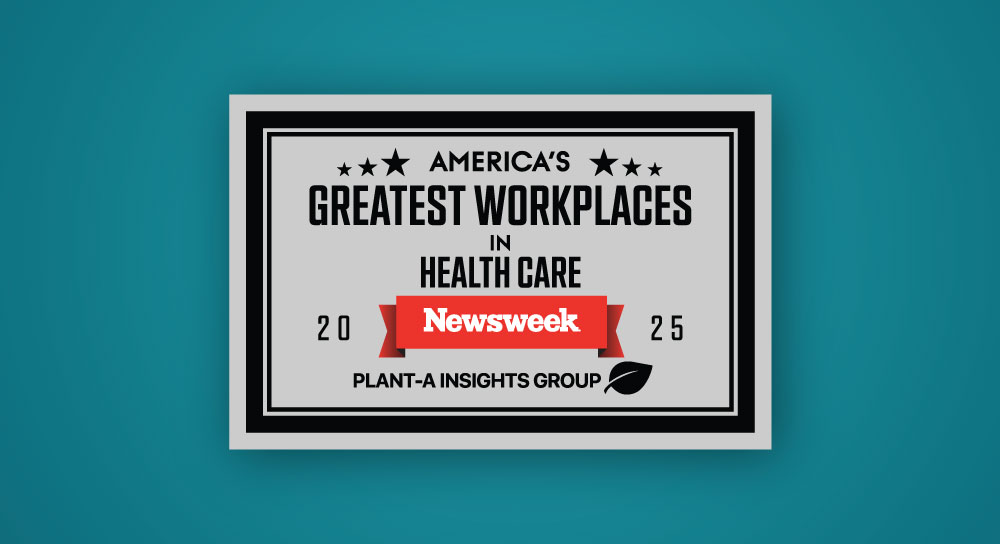Through five decades as medical transcriptionists in Community Health System’s Health Information Management department, they’ve occasionally shared a desk and become good friends.
Scroggins jokingly calls Bush “grandma” because she’s three years older at 78; Bush refers to her longtime colleague as “the robot” for her preciseness and strict attention to detail. They first met at Fresno’s old county hospital in jobs they had before they started at Community in 1972.
Early on, Scroggins transcribed in the cardiology department and even watched procedures — first-hand experience she said helped her have a more global perspective in medicine.
Bush loves the idea of caring for people and originally wanted to be a nurse. “But I couldn’t pass Algebra,” she explained. She still visualizes each patient behind the medical descriptions: “Part of my giving is to do the best job I can with the paperwork, so it can be handed to the next specialist or help if the patient needs it for their insurance company.”
Technology has transformed medical record keeping
“These two employees’ Community legacy stretches back to when the largest part of our downtown hospital was brand new and we opened Community Regional’s 10-story bed tower. Their longevity and contributions to our patients is inspiring,” said Craig Castro, president and CEO of Community.Castro praised the transcriptionists’ flexibility over the years: “They’ve been able to adapt to huge changes in our industry and to Community doubling in size, adding new services and expanding hospital campuses over the past 50 years. What hasn’t changed is the pride they take in knowing how our Valley depends on us (and them.)”
Digital innovation has transformed the medical transcriber’s day-to-day tools — evolving from carbon paper, cassette tapes and typewriters — to electronic records and voice recognition technology. While technology has made their jobs more efficient, transcription still requires the human touch to ensure accuracy. Both women take great pride in this role.
These days, Bush simply ‘Googles’ new phrases and conditions. “In the beginning of my transcription career in 1964, I was a clerk and on my first day of work the RN who was my supervisor showed me the Stedman’s Medical Dictionary, Webster’s Dictionary and a drug index and said, ‘Everything you need to know for transcription is in these books,’” she described. “It was a start, but not nearly what is required. Anatomy, physiology, biology, retyping reports over and over to correct what I thought I heard was my main teacher.”
They also made their own resource manuals for certain doctors who used tricky phrases that needed interpreting or for the one who would throw geography and history references in with his patient updates and expect those ad hoc additions to be included in the transcription.
Keen ears and patience make all the difference
Mobile phones were also a big change over the years for both physicians and transcriptionists. “These doctors pick up a cell phone, put on the headphones or talk into it on speaker now. They'll just drive and dictate,” Bush described, “and you'll hear traffic, you'll hear trains, you'll hear cows mooing. And sometimes they forget it’s in their pocket turned on.”The two women joke that they get to know physicians from hours of listening without really knowing or ever meeting them. “When we’d walk down the hall or go to the cafeteria on break and hear somebody talking, we’d know which doctor it was,” Bush said. “We didn’t know their face, but we knew their voice.”
They’ve honed their hearing over decades and take extra time to listen again and again.
It takes that care, the women said, to discern the difference between 15 milligrams and 50 milligrams — a difference in a medication that could cause harm if it isn’t right. Both love that they can double-check things now through electronic medical record notes that have doses and medication names. When they first started it took a phone call to a doctor.
Bush and Scroggins have seen and heard so much through the years, their colleagues consider them the “quality assurance team.” Community Health System has grown so much, the medical transcriptionist department now numbers 11 and the women are among five who’ve reached senior Medical Transcriptionist 3 status and take turns being the quality reviewer for each other.
Five decades of learning and being witness to miracles
Asked what kept them working 50 years and the two friends have similar responses. “I never planned to work 50 years, and I’ve learned so much about medicine,” Scroggins shared.Bush agreed. “Where else can you get paid to learn something new every day?”
Both say there’s nothing routine about what they do. Every new patient note, medical history or physical tells a new story.
“How many miracles we are witness to through the medical records,” Bush said. “There’s so much wrong when they come in and then they walk out. There’s constant healing … and babies being born.”
Each patient record is more than words on a page. “My chest hurts when I think about our burn patients and the pain they’ve had to endure,” Bush explained. “Same with our cancer patients, especially when you know they’re holding out for hope.”
And sometimes their normally library quiet days are exciting. “We can get a phone call and they say ‘We’ve got somebody in a helicopter heading to San Francisco,’ or wherever,” Bush described. “And it’s an emergency and they need the report in the computer. And you are obligated and privileged to get up and have a computer in the next room to click on and get the job done and that patient has their care record up to date.”
The two were among the first at Community offered the chance to work remotely during the 1990s and are grateful for the flexibility and extra time with family over the years.
“I made enough money to raise my children by myself,” Scroggins said. “And I’m grateful that I was able to receive the COVID-19 vaccines and support provided by Community throughout the pandemic.”
She adds, “Community is a great place to work, and Linda and I have had good benefits and great co-workers. It doesn’t get any better than that.” Her longtime colleague agrees. Bush is not ready to retire: “I still love what I do.”





